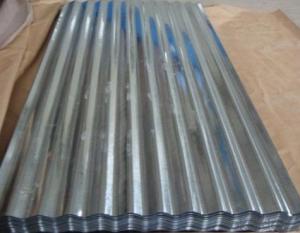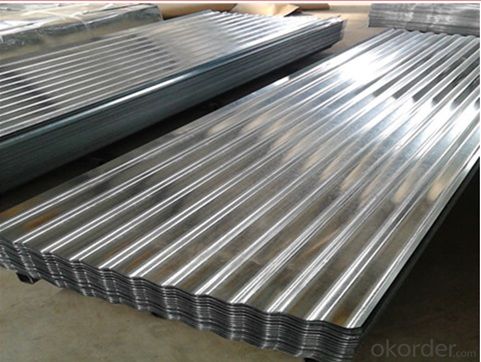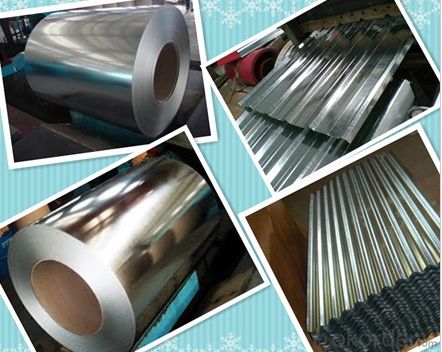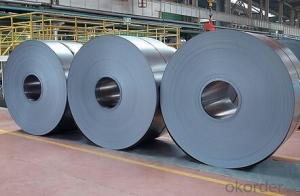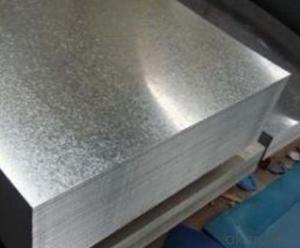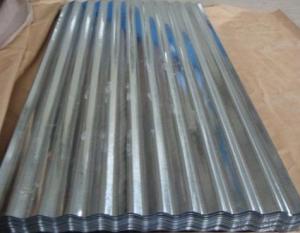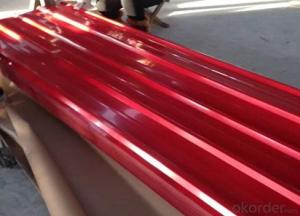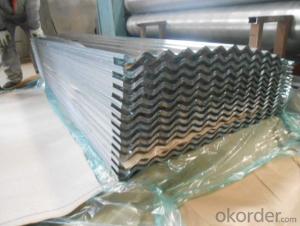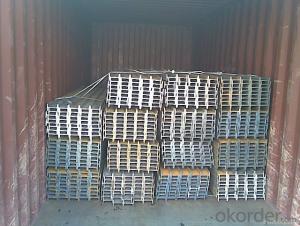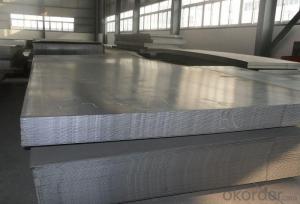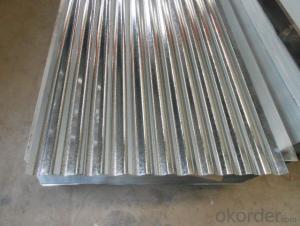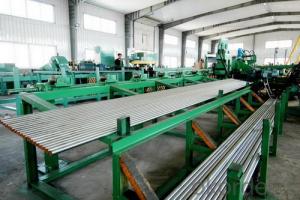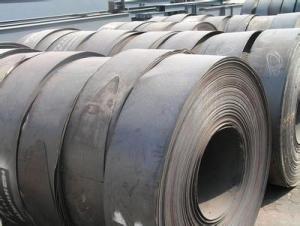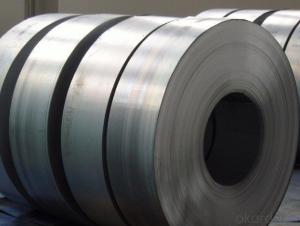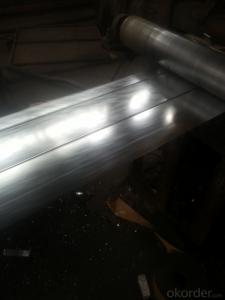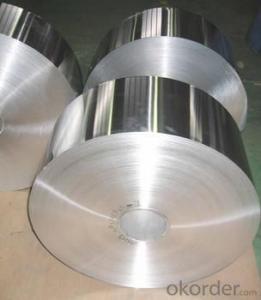Hot-Dipped Corrugated Steel Roofing Sheet
- Loading Port:
- Tianjin
- Payment Terms:
- TT OR LC
- Min Order Qty:
- 50 m.t.
- Supply Capability:
- 2000 m.t./month
OKorder Service Pledge
OKorder Financial Service
You Might Also Like
Specification
Product Brief Introduction
Hot-Dipped Corrugated Metal Roofing Sheet
--- Corrosion resistance: Pre-coated steel offers excellent corrosion resistance achived through continuous hot DIP galvanization and corrosion resistant primer/polyester coating. Protection is achieved when zinc and steel are together in the presence of moisture; The zinc protects the steel by galvanic action
Product Features
. Traditional aesthetics outlook
. Suitable for new house or renovation.
. Less joints, watertight
. Long life service
. Tedun also provide relative ridge cap, fasteners and other accessories
Product Specification
Standard:ASTM, GB,JIS,JIS G3302 ASTM 755 EN10169
Grade: DX51D CGCC CS
Thickness: 0.13mm~3.0mm,
Width: 1250,600-1250mm
Coil weight:3-12 MT
Coil ID:508/610mm
Chemical composition:
C | Si | Mn | Cr | Ni | P | S |
0.150 | 0.476 | 11.231 | 12.50 | 0.900 | 0.039 | 0.010
|
FAQ
How long will we receive the goods ?
45days after receiving workable L/C
how do you control the quality ?
we have our own quality control department ,we will arrange QC person to see the production line ,when goods finish ,before shipment ,our QC person will check the quality as per our test report request ,if the goods is ok ,then we issue the test report ,and we allow the goods shipping ,otherwise will not allow ship the goods.
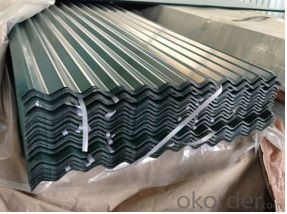
- Q: How are steel strips coated with other materials?
- Steel strips can be coated with other materials through various processes. One common method is called hot-dip coating, where the steel strips are immersed in a bath of molten material, usually zinc or aluminum. The strips are carefully passed through the bath, ensuring that the material adheres to the surface of the steel. This process creates a protective layer, known as a galvanized coating, which helps prevent corrosion and extends the lifespan of the steel. Another method is known as electroplating, which involves the use of an electric current to deposit a layer of coating material onto the steel strips. This process typically uses metals such as nickel, chrome, or tin, which are dissolved in a solution and then attracted to the steel surface through electrical charges. The thickness of the coating can be controlled by adjusting the current and the duration of the process. Coating steel strips with other materials can also be achieved through physical vapor deposition (PVD) or chemical vapor deposition (CVD) techniques. In PVD, a thin layer of coating material is evaporated and then condensed onto the steel surface, while in CVD, a chemical reaction occurs at high temperatures, leading to the formation of a solid coating on the steel. Additionally, steel strips can be coated using various painting or powder coating methods. Painting involves applying a layer of liquid paint onto the steel surface, which is then dried or cured to form a protective coating. Powder coating, on the other hand, involves electrostatically applying a dry powder onto the steel, which is then heated to melt and adhere to the surface, forming a durable coating. Overall, the process of coating steel strips with other materials involves a combination of chemical, physical, and electrochemical methods, each tailored to achieve the desired properties and characteristics of the coating. These coatings provide important benefits such as corrosion resistance, improved aesthetics, and enhanced durability for a wide range of applications in industries such as construction, automotive, and manufacturing.
- Q: What are the environmental impacts of steel strip manufacturing?
- Significant environmental consequences can arise from the manufacturing of steel strips. To begin with, the extraction of iron ore, the primary raw material used in steel production, can result in deforestation, the destruction of habitats, and the loss of biodiversity. The mining process also demands substantial amounts of energy and water, contributing to the emission of greenhouse gases and the pollution of water sources. Once iron ore is extracted, it must undergo smelting and refining processes, which release considerable quantities of carbon dioxide and other greenhouse gases. These emissions contribute to both climate change and air pollution. Additionally, the smelting process generates slag, a waste product that, if not properly managed, can contaminate soil and water. During the manufacturing process, steel strip production involves the intensive consumption of energy, primarily derived from fossil fuels. This energy consumption not only leads to carbon emissions but also exacerbates climate change. Furthermore, the production of steel strips necessitates the use of chemicals and coatings, which can result in the release of harmful substances into the environment. Moreover, the disposal of waste generated during steel strip manufacturing, including sludge and other by-products, poses a threat to water sources and ecosystems if not adequately treated or disposed of. These waste products often contain heavy metals and other pollutants that can contaminate soil and water, negatively impacting both human and environmental health. Overall, the environmental impacts of steel strip manufacturing encompass a wide range of issues, including deforestation, habitat destruction, greenhouse gas emissions, air pollution, water pollution, and waste generation. It is imperative for the industry to adopt more sustainable practices, such as utilizing renewable energy sources, implementing recycling initiatives, and minimizing the use of harmful chemicals. These measures are essential in order to mitigate the environmental impacts and promote a greener steel manufacturing process.
- Q: What are the factors that affect the impact resistance of steel strips?
- There are several factors that can affect the impact resistance of steel strips, including the composition and microstructure of the steel, its hardness and strength, the presence of impurities or defects, the temperature at which it is used, and the speed of impact. Other factors such as the thickness and width of the strip, as well as the presence of any coatings or treatments, can also influence its impact resistance.
- Q: How are steel strips sawed or cut with a bandsaw?
- Steel strips can be sawed or cut with a bandsaw by securing the strip on a stable surface and feeding it through the bandsaw blade, which moves in a continuous loop. The bandsaw blade features sharp teeth that cut through the steel strip as it is guided by the operator. This method allows for precise and efficient cutting of steel strips to desired lengths or shapes.
- Q: What are the different heat treatment methods for steel strips?
- Steel strips can undergo various heat treatment methods, each serving its own purpose and offering unique advantages. These methods encompass annealing, quenching and tempering, hardening, and case hardening. 1. Annealing: In annealing, the steel strip is heated to a specific temperature and subsequently cooled slowly. This process alleviates internal stresses, enhances the steel's machinability, and improves ductility. Additionally, it refines the grain structure, resulting in a material that is softer and more homogeneous. 2. Quenching and tempering: Quenching involves rapidly cooling the steel strip by immersing it in a medium such as water or oil to achieve high hardness and strength. After quenching, the steel strip is tempered by reheating it to a lower temperature, reducing brittleness and improving toughness. This method is commonly employed to manufacture high-strength steel strips for applications requiring resistance to wear and impact. 3. Hardening: Hardening entails heating the steel strip to a specific temperature and then rapidly cooling it to achieve high hardness and strength. Unlike quenching and tempering, hardening does not involve the tempering process, thus maintaining the steel strip's hardness and strength. This method is suitable for applications demanding maximum hardness, such as cutting tools and machine parts. 4. Case hardening: Case hardening is a surface hardening process that involves introducing carbon to the surface of the steel strip. This increases its hardness while retaining a relatively soft and tough core. Achieved by heating the steel strip in a carbon-rich environment, case hardening provides exceptional wear resistance and is commonly used for gears, shafts, and other durable components. Ultimately, the choice of heat treatment method for steel strips is contingent upon the desired properties and specific application requirements. These diverse methods offer varying combinations of hardness, strength, toughness, and wear resistance, enabling manufacturers to customize steel strips to meet their unique needs.
- Q: What is the length tolerance of steel strips?
- The length tolerance of steel strips can vary depending on the specific type and grade, but generally it is around ± 0.2% to ± 0.5% of the specified length.
- Q: What are the different surface patterns available for steel strips?
- There are several different surface patterns available for steel strips, including plain, smooth, textured, embossed, brushed, and patterned surfaces.
- Q: How are steel strips inspected for internal defects?
- Steel strips are inspected for internal defects using various non-destructive testing methods. One common method is ultrasonic testing, where high-frequency sound waves are passed through the steel strip. If there are any internal defects such as cracks, voids, or inclusions, the sound waves will be reflected differently, and these reflections are detected by sensors. By analyzing the pattern of the reflections, the size, shape, and location of the internal defects can be determined. Another method used is magnetic particle inspection. In this technique, the steel strip is magnetized, and iron particles are applied on the surface. If there are any internal defects, the magnetic field within the strip will be disrupted, causing the iron particles to cluster around the defects. This clustering can be visually detected and indicates the presence of internal defects. Liquid penetrant testing is also employed to inspect steel strips for internal defects. In this process, a liquid dye penetrant is applied to the surface of the strip. The dye penetrates into any surface openings, such as cracks or voids, and is left to dwell for a specific period. After that, the excess dye is removed, and a developer is applied. The developer draws the remaining dye out of the defects, making them visible and easily detectable under proper lighting conditions. Additionally, eddy current testing can be used to inspect steel strips for internal defects. This method involves passing an alternating current through a coil, creating an electromagnetic field. As the coil is moved along the surface of the strip, any variations in the electromagnetic field caused by internal defects are detected by sensors. These variations are then analyzed to identify the presence and characteristics of internal defects. Overall, these non-destructive testing methods provide reliable and efficient ways to inspect steel strips for internal defects without causing any harm to the material. They play a crucial role in ensuring the quality and integrity of steel strips before they are used in various applications.
- Q: Can steel strips be used in the production of musical instrument strings?
- Yes, steel strips can be used in the production of musical instrument strings. Steel strings are commonly used in instruments like guitars, pianos, violins, and cellos to produce a bright and vibrant sound.
- Q: Can steel strips be used in medical or pharmaceutical applications?
- Medical or pharmaceutical applications can indeed utilize steel strips. Their strength, durability, and resistance to corrosion make them a popular choice in the manufacturing of medical devices and equipment. Surgical instruments, implants, orthopedic devices, and various other medical tools can all benefit from the use of steel strips. In the realm of pharmaceutical packaging, steel strips, particularly stainless steel ones, are commonly employed in blister packs to ensure the secure and tamper-evident sealing of medications. Furthermore, the pharmaceutical industry frequently relies on stainless steel strips in cleanrooms and controlled environments, where maintaining hygiene and sterility is of utmost importance. All in all, steel strips provide numerous advantages in medical and pharmaceutical applications, rendering them suitable for various purposes in these industries.
Send your message to us
Hot-Dipped Corrugated Steel Roofing Sheet
- Loading Port:
- Tianjin
- Payment Terms:
- TT OR LC
- Min Order Qty:
- 50 m.t.
- Supply Capability:
- 2000 m.t./month
OKorder Service Pledge
OKorder Financial Service
Similar products
Hot products
Hot Searches
Related keywords
